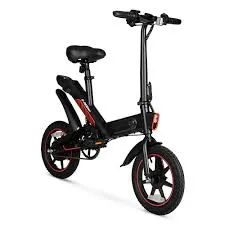
- Afrikaans
- Albanian
- Amharic
- Arabic
- Armenian
- Azerbaijani
- Basque
- Belarusian
- Bengali
- Bosnian
- Bulgarian
- Catalan
- Cebuano
- Corsican
- Croatian
- Czech
- Danish
- Dutch
- English
- Esperanto
- Estonian
- Finnish
- French
- Frisian
- Galician
- Georgian
- German
- Greek
- Gujarati
- Haitian Creole
- hausa
- hawaiian
- Hebrew
- Hindi
- Miao
- Hungarian
- Icelandic
- igbo
- Indonesian
- irish
- Italian
- Japanese
- Javanese
- Kannada
- kazakh
- Khmer
- Rwandese
- Korean
- Kurdish
- Kyrgyz
- Lao
- Latin
- Latvian
- Lithuanian
- Luxembourgish
- Macedonian
- Malgashi
- Malay
- Malayalam
- Maltese
- Maori
- Marathi
- Mongolian
- Myanmar
- Nepali
- Norwegian
- Norwegian
- Occitan
- Pashto
- Persian
- Polish
- Portuguese
- Punjabi
- Romanian
- Russian
- Samoan
- Scottish Gaelic
- Serbian
- Sesotho
- Shona
- Sindhi
- Sinhala
- Slovak
- Slovenian
- Somali
- Spanish
- Sundanese
- Swahili
- Swedish
- Tagalog
- Tajik
- Tamil
- Tatar
- Telugu
- Thai
- Turkish
- Turkmen
- Ukrainian
- Urdu
- Uighur
- Uzbek
- Vietnamese
- Welsh
- Bantu
- Yiddish
- Yoruba
- Zulu
Dec . 01, 2024 00:33 Back to list
adjusting shifter on mountain bike
Adjusting the Shifter on Your Mountain Bike A Comprehensive Guide
Mountain biking offers thrilling adventures, challenging trails, and a unique connection with nature. However, ensuring your bike is in top condition is essential for a smooth ride, and one of the critical components to fine-tune is the shifter. Adjusting the shifter on your mountain bike not only enhances gear shifting but also optimizes your overall riding experience. In this guide, we will break down the steps to effectively adjust your bike's shifter.
Understanding the Shifter System
Before diving into adjustments, it’s important to understand the components involved in the shifting system. The shifter is the mechanism attached to your handlebars that allows you to change gears. It operates a cable that connects to the derailleur, which moves the chain between gears. Common issues with shifters involve misalignments, stretch of the cables, or dirt accumulation.
Gather Your Tools
To adjust your shifter, you'll need a few basic tools a 5mm Allen wrench for the derailleur, screwdrivers (Phillips and flathead), and potentially a cable cutter if you need to replace the cable. A clean cloth and some bike lubrication can also be handy to ensure all components are functioning smoothly.
Step-by-Step Adjustment
adjusting shifter on mountain bike

1. Inspect the Setup Start by checking the overall condition of your shifter and derailleur. Look for any signs of wear, frayed cables, or dirt buildup. Clean the area thoroughly to remove any debris.
2. Check Cable Tension With the bike in a stand, shift to the highest gear (smallest cog). Look at the derailleur; it should align perfectly with the cog. If not, adjust the cable tension by turning the barrel adjuster counterclockwise to increase tension or clockwise to decrease it.
3. Adjust the Limit Screws Next, locate the limit screws on your derailleur. These are usually marked as “H” for high gear and “L” for low gear. Adjust the high limit screw if the chain doesn’t move freely to the smallest cog or if it overshifts. Similarly, adjust the low limit screw to ensure proper alignment with the largest cog.
4. Test Shifting Shift through all the gears while turning the pedals. Pay attention to how smoothly the chain shifts from one gear to another. If you hear grinding or feel resistance, further adjustment to the cable tension or derailleur alignment may be necessary.
5. Final Touches Once shifting feels smooth, apply a small amount of lubricant to the cables and pivots to keep everything running smoothly.
Conclusion
Adjusting the shifter on your mountain bike can significantly enhance your riding experience. With a few simple steps and regular maintenance, you can ensure precise gear changes that allow you to conquer even the most challenging trails. Regularly check your shifter and derailleur, especially before long rides, to keep your bike performing at its best. Happy biking!
-
The Ultimate Kids' Four-Wheeler Experience
NewsJul.09,2025
-
The Ultimate Guide to Mountain Bikes: Gear Up for Your Ride
NewsJul.09,2025
-
The New Age of Cycling: Electric Bikes for Every Rider
NewsJul.09,2025
-
The Best Kids Bicycles: Ride in Style and Safety
NewsJul.09,2025
-
The Best 3-Wheel Scooters for Kids: Fun, Safety, and Adventure
NewsJul.09,2025
-
Revolutionize Your Ride: Affordable Electric Bikes
NewsJul.09,2025
-
Finding the Perfect Mountain Bike for Every Rider
NewsJul.09,2025



